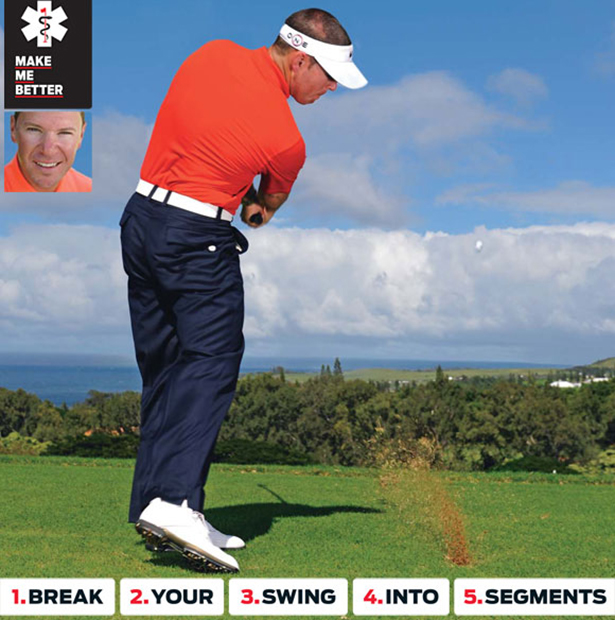Sean Foley guarantees you’ll become a better golfer after practising these five tips.
Whether I’m working with Tiger Woods, an elite college player, or a once-a-month golfer, the following statement holds true: There are no shortcuts to getting better. You’re going to have to put in some work. That’s the bad news. The good news is: If you follow my advice, the things you have to do to improve and make that improvement last- can be fairly simple. I’m a big believer in working on one thing at a time. So to help you get started, I’ve broken down the swing into five segments. Within each segment I’ll give you a single element to focus on. If you work on any one of them, you should begin to see positive changes in your swing. And if you spend time practising all five, I guarantee you’ll become a better golfer.
1. Address: Build Up A Power Platform
So many golfers would get better by simply improving their address posture. The guys I teach on tour set up in different ways, but the one common denominator is that they feel the ground under their feet. They get into a position where their legs are like shock absorbers, and they’re poised to use the ground to create force. They’re virtually gripping the ground with their feet. To get a feel for this, try making some swings in your bare feet. Your goal is to feel the ground under you at address, and then pay attention to your footing as you swing. Unless you’re properly grounded, it’s tough to control a swing with any power.
2. Takeaway: Turn Everything Back Together
When I ask amateurs to show me how they start back, most will move the club away with only their hands and arms. What I want to see is the hands and arms moving in sequence with the rotation of the upper torso. All three should move together as one unit until the left arm gets parallel to the ground at that point the swing’s momentum will keep the hands and arms on plane. This first part of the swing is crucial to staying in sync. Ingrain this feeling of everything moving together by stretching a towel across your chest with the ends under your armpits. Practise starting back while holding the towel in position.
3. At The Top: Increase Your Hip Turn
You might have been told to make a backswing where your left shoulder is under your chin. That way you know you’ve reached the top and can start down. This isn’t the worst advice I’ve ever heard, but it’s possible to turn that left shoulder under the chin without rotating your upper torso much at all–and that can put too much emphasis on the arms. It’s better to focus on your hip turn. Ideally, your hips turn away from the target as much as they can. Here’s a great drill for feeling the proper rotation: Make practice backswings while posting up on your right toe. Your right foot should be set back about two feet from its normal position. This allows the hips to turn freely. If you don’t turn them, it’s difficult to keep your balance at the top.
4. Impact: Think About The Shaft, Not The Ball
This can be a difficult concept for amateurs to grasp, but if you want to use the club properly and hit the ball flush, the bottom of your swing has to be in front of the ball. Your shaft should be leaning toward the target at impact, and the divot should start after you strike the ball. But if you’re focussing too hard on hitting the ball, your wrists can break down as you try to scoop it into the air.
It’s much easier to hit solid shots if you focus on the shaft: You want it pointing ahead of your body at impact. To help ingrain this move, stick a pencil into the butt end of the club and practise chipping and pitching with the pencil pointing ahead of your body through impact. Once that becomes easy, move up to full swings with the same goal.
5. Finish: Get Taller For More power
It’s no secret that tour pros use the ground to create force to hit the ball farther. So when students tell me they’re trying to stay in their posture to the finish, I shake my head. This really restricts the body’s ability to continue rotating and leads to back injuries. Instead, I want you to keep your arms extended and push your belt buckle up and toward the target, which will allow you to finish tall. It’ll feel as if you’re pushing off the ground. A useful drill is to get in your impact position, then push up with your pelvis and stand tall into your finish.




